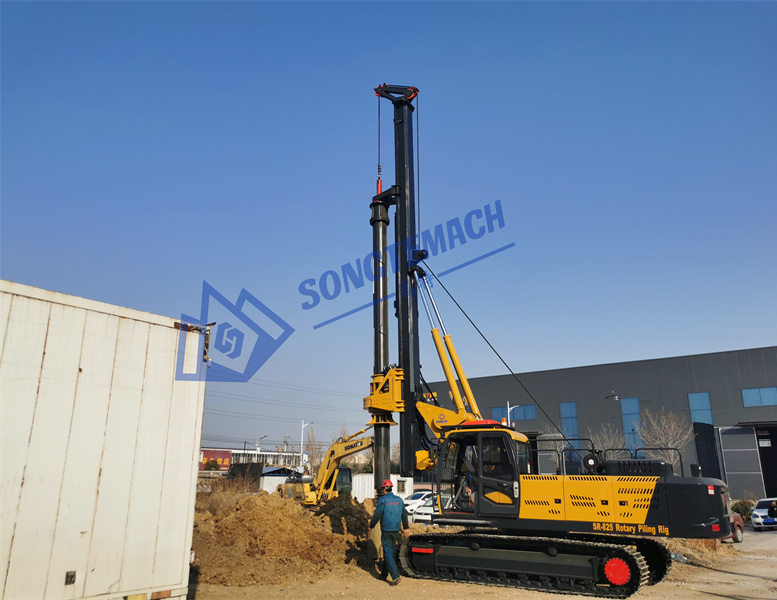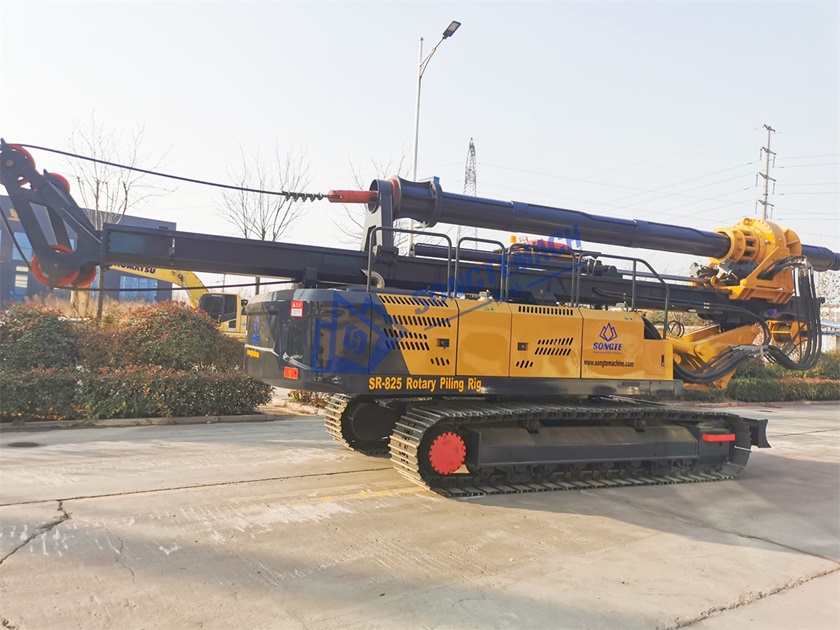El principio de funcionamiento de la plataforma de perforación de pilotes rotativos en la construcción de cimentaciones de pilotes
Abstracto
La plataforma de perforación de pilotes rotativos juega un papel fundamental en la construcción moderna, particularmente en proyectos de cimentación de pilotes, como pilotes colados en el lugar. Estos equipos son versátiles y eficientes, capaz de operar en diversas condiciones geológicas. Este artículo explora el principio de funcionamiento de las plataformas de perforación rotativas, Detallando sus componentes, Mecanismos operativos, y los tipos de construcción de cimentación de pilotes que soportan.
Introducción a la plataforma de perforación de pilotes
Los equipos de perforación rotativos son esenciales en el campo de la ingeniería civil, Especialmente para la construcción de cimentaciones de pilotes. Son muy utilizados en la construcción municipal, Carreteras, Puentes, y edificios de gran altura. Este artículo tiene como objetivo proporcionar una descripción general completa de los principios de funcionamiento detrás de estos equipos, haciendo hincapié en su aplicación en la construcción de pilotes colados in situ y otros métodos de cimentación de pilotes.
Componentes de la plataforma de perforación de pilotes rotativos
Estructura de la plataforma de perforación
- Portador de base: Por lo general, una base montada en orugas o camiones que proporciona estabilidad y movilidad.
- Mástil: Una estructura vertical que soporta el aparato de perforación y alinea la sarta de perforación.
- Accionamiento giratorio: Una unidad motorizada que proporciona fuerza de rotación a la sarta de perforación y a las herramientas de perforación adjuntas.
- Kelly Bar: Un tubo de acero telescópico que transfiere las fuerzas de rotación y verticales a la herramienta de perforación.
- Herramienta de perforación: Se utilizan varios tipos en función de las condiciones del terreno, incluyendo sinfines cortos, Cubos rotativos, y barriles de núcleo.
Sistemas auxiliares
- Sistema hidráulico: Potencia el movimiento y el funcionamiento del mástil, Accionamiento giratorio, y otros componentes.
- Sistema de control: Gestiona el funcionamiento de la plataforma, a menudo con controles electrónicos avanzados para mayor precisión.
- Sistema de enfriamiento: Garantiza que los fluidos hidráulicos y otros componentes no se sobrecalienten durante el funcionamiento.
Mecanismo Operacional
Proceso de perforación de la plataforma de pilotaje
- Configuración y alineación: El equipo de perforación se coloca en el sitio de perforación, y el mástil está alineado verticalmente.
- Selección de herramientas: Dependiendo de las condiciones del suelo o de la roca, Se elige una herramienta de perforación adecuada.
- Operaciones de perforación: El accionamiento giratorio hace girar la barra Kelly y la herramienta de perforación adjunta. La herramienta corta el suelo o la roca, Creación de un pozo.
- Perforación en seco: Los sinfines cortos se utilizan para suelos cohesivos.
- Perforación húmeda: Los cubos rotativos se emplean en suelos sueltos o que contienen agua.
- Perforación de rocas: Los barriles de núcleo se utilizan para perforar a través de capas de roca dura.
- Eliminación de escombros: Los recortes salen a la superficie mediante la acción giratoria de la herramienta de perforación y se eliminan del pozo.
Técnicas de perforación
- Barrena de vuelo continuo (CFA): Se utiliza para crear pilotes de cimentación profundos sin necesidad de quitar la barrena hasta que se forme el pilote.
- Perforación Kelly: La barra Kelly se extiende y se retrae para lograr profundidades de perforación más profundas, Normalmente se utiliza para pilotes de mayor diámetro.
Colocación de hormigón
Construcción de pilotes colados in situ, Una vez que el pozo se perfora a la profundidad deseada, Se coloca una jaula de refuerzo, y el hormigón se vierte directamente en el pozo, formando una pila sólida in situ.
Máquina de pilotaje rotativa hidráulica para pilotes perforados 25m SR-825

Tipos de construcción de cimentación de pilotes
Pilas fundidas en el lugar
- Método: El pozo se perfora a la profundidad requerida, Se inserta una jaula de refuerzo de acero, y se vierte hormigón en su lugar.
- Ventajas: Proporciona fuerza, Pilotes portantes con excelente adherencia al suelo circundante.
Pilotes prefabricados
- Método: Los pilotes prefabricados de hormigón se hincan en el suelo utilizando la plataforma de perforación rotativa como herramienta auxiliar.
- Ventajas: Reduce el tiempo de construcción y proporciona un control de alta calidad sobre la producción de pilotes.
Aplicaciones de la plataforma de perforación de pilotes
Las plataformas de perforación rotativas se emplean en varios escenarios de construcción, Incluido:
- Desarrollo urbano: Para edificios de gran altura donde los pilotes de cimentación profundos son esenciales.
- Proyectos de Infraestructura: Como carreteras y puentes que requieren cimentaciones estables.
- Estructuras frente al mar: Donde los pilotes deben hincarse a través de suelos blandos y capas que contienen agua..
Conclusión
La plataforma de perforación de pilotes rotativos son herramientas indispensables en la construcción moderna, proporcionando la versatilidad y eficiencia necesarias para varios proyectos de cimentación de pilotes. Comprender sus principios de funcionamiento, Componentes, y mecanismos operacionales es crucial para optimizar su uso en diferentes condiciones geológicas. A medida que avanza la tecnología, Estos equipos seguirán evolucionando, Ofreciendo una precisión y capacidad aún mayores en la ingeniería de cimentaciones.
Referencias
- Tomlinson, M.J., & Woodward, J. (2015). Práctica de Diseño y Construcción de Pilotes. Prensa CRC.
- Cernica, J.N. (1994). Ingeniería Geotécnica: Diseño de cimentaciones. John Wiley & Hijos.
- Bowles, J.E. (1996). Análisis y diseño de cimentaciones. McGraw-Hill.
- Especificaciones y manual de operación de la plataforma de perforación rotativa Songte.
Más enlaces:
¿Cómo funciona la máquina de pilotaje rotativo?, Video aquí!
Fabricante de máquinas de pilotaje, Más modelos Equipos de perforación rotativos
 Songtemachine
Songtemachine

